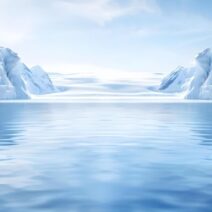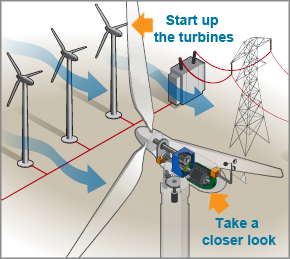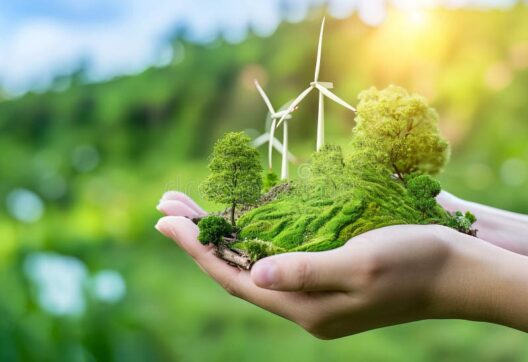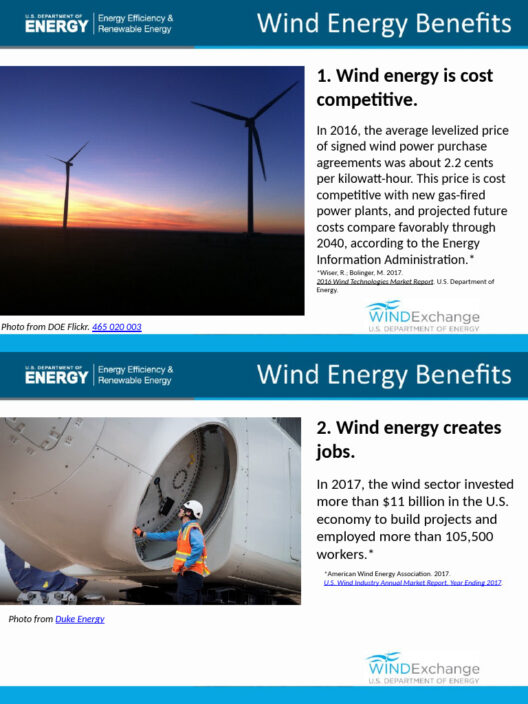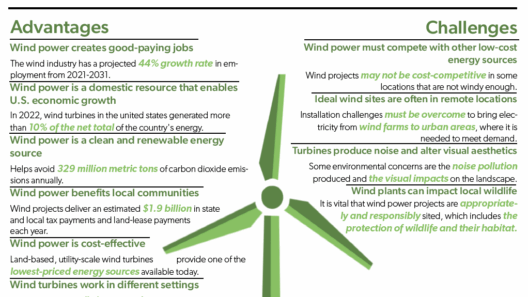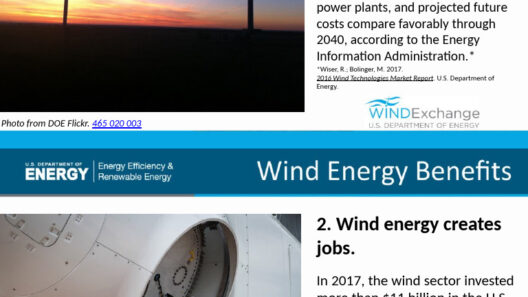Harnessing the Wind: A Dynamic Dance of Nature and Technology
Have you ever wondered, while sipping your morning coffee, what makes the wind turbines spin endlessly on the horizon? Is it mere chance or a masterful orchestration of energy conversion? In essence, wind turbines transform kinetic energy from the wind into a usable form of electrical energy. However, understanding this transformative process is an intriguing challenge that reveals the intricacies of modern energy systems. Let’s delve into the fascinating world of wind energy and unravel the secrets of how it powers our lives.
The Anatomy of Wind Energy Conversion
Wind energy is harnessed using turbines that boast several essential components, each playing a pivotal role in the conversion process. The most recognizable features are the rotor blades, which capture wind energy and initiate the spinning motion. Interestingly, these blades are engineered to optimize aerodynamic performance, creating lift, much like airplane wings. As wind flows over and under the blades, it generates a pressure differential that propels them into motion.
Once in motion, the rotor turns a shaft connected to a gearbox, which is designed to amplify rotational speed. This amplification is crucial, as the turbine’s generator requires high-speed input to efficiently convert mechanical energy into electrical energy. The generator itself employs electromagnetic induction principles, where rotating magnets create alternating current (AC) in conductive coils. This transformation from mechanical to electrical energy is not only elegant but also a marvel of engineering innovation.
The Dance of Variables: Wind Speed and Turbine Efficiency
The efficiency of a wind turbine is a function of various factors, with wind speed being the most critical. Each turbine has a specific ‘cut-in’ speed, the minimum wind speed required for energy generation, and a ‘cut-out’ speed, beyond which the turbine must shut down to prevent damage from excessively high winds. The power produced by the turbine is proportional to the cube of the wind speed, meaning that even small increases in wind speed can significantly escalate energy production. This relationship underscores the need for precise site selection, as locations with consistent, high-speed winds yield optimal energy outputs.
Moreover, turbine technology incorporates intricate control systems to optimize performance. Variable pitch control, for instance, adjusts the angle of the blades relative to the wind direction to enhance efficiency and ensure safe operation across a range of wind speeds. This sophisticated balance between harnessing as much energy as possible and mitigating risks presents an ongoing challenge for engineers and environmentalists alike.
Environmental Considerations: A Double-Edged Sword
While the allure of wind energy lies in its renewable nature and low greenhouse gas emissions, it is imperative to explore the environmental implications associated with wind turbines. The aesthetics of towering turbines placing their silhouettes against pristine landscapes often spark debate. Critics raise concerns about their impact on wildlife, particularly birds and bats, which may succumb to collisions during their migratory routes. Consequently, identifying optimal turbine locations becomes not only an engineering challenge but a critical conservation mission.
Critical examination of the lifecycle environmental impact of wind turbines reveals other considerations as well. The production and eventual disposal of turbine components necessitate resource extraction, manufacturing processes, and recycling measures. The challenge lies in ensuring these activities maintain ecological integrity while minimizing carbon footprints—a complex puzzle requiring innovative solutions from stakeholders across multiple sectors.
The Future of Wind Energy: Challenges and Innovations
As technology advances, so does the potential for wind energy. Emerging innovations, such as floating wind farms, promise to tap into previously unreachable offshore winds, vastly expanding the geographical footprint of wind energy production. Additionally, energy storage solutions like batteries and pumped hydro systems are being developed to address the intermittent nature of wind energy, ensuring a consistent power supply even when wind speeds wane.
However, every innovation comes with its set of challenges. The integration of wind energy into existing power grids necessitates robust infrastructure, policy framework, and public acceptance. Community buy-in is critical, as localized opposition can hinder project development and influence governmental policies. A playful question arises: How do we inspire communities to embrace wind energy as a catalyst for sustainable development, rather than viewing it through an oppositional lens?
Engaging communities through education and outreach initiatives can help create a more informed public, bridging the gap between innovation and acceptance. It’s astonishing how a simple conversation can transform perceptions about wind energy and foster collaborative efforts to tackle local and global energy challenges.
Conclusion: Unity in Diversity of Energy
The journey from wind to electricity embodies the potential for a sustainable future, emphasizing the power of collaboration across technology, environmental science, and community engagement. With every spin of a turbine blade, we not only generate electricity but also ignite discussions about our relationship with nature and the energy choices we make. While challenges exist, the pursuit of wind energy serves as a testament to human ingenuity—the quest for balance between harnessing natural resources and nurturing the environment enriches us all. Together, we can champion a cleaner, greener future powered by the very forces of nature that surround us.
